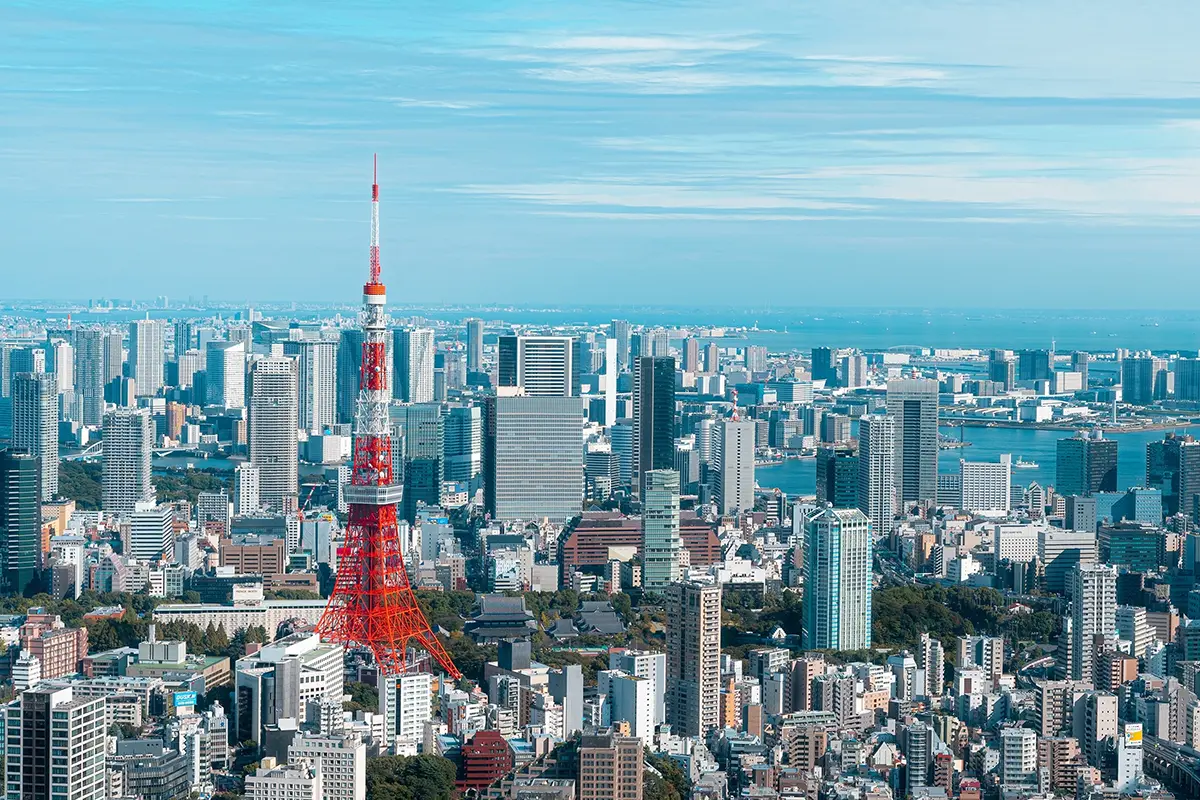Tokyo Tower
東京タワー
Enjoy panoramic views, rich history, and vibrant culture at Tokyo Tower!

Call this number
Google Map in English
Google Maps in Japanese
I was in the 5th grade when I visited Tokyo Tower for the first time on a school field trip. I vividly remember that massive red structure towering in the sky. It was amazing that they offered us an option to climb outside steps to the middle level. Of course, I took an elevator instead. Since then, I returned to Tokyo Tower numerous times to see the panoramic view of Tokyo.
As young children, we were all afraid to go into the restrooms in Tokyo Tower. There is an urban legend that says certain bathrooms in Tokyo Tower are haunted. Visitors and employees have reported eerie sensations, sudden drops in temperature, and even seeing ghostly apparitions in mirrors. So, be careful when you go there (ha ha ha).
Nestled in the heart of Minato, Tokyo, the iconic Tokyo Tower stands as a symbol of Japan’s post-war rebirth and technological ascendancy. Completed in 1958, this 332.9-meter (1,092 ft) lattice tower was inspired by the Eiffel Tower, yet distinguishes itself with its vibrant white and international orange paint, a nod to air safety regulations. More than just a communications and observation tower, Tokyo Tower has etched its place in the city’s skyline and the hearts of over 150 million visitors.
The tower’s inception was driven by a burgeoning need for a comprehensive broadcasting system in the Kantō region, sparked by NHK’s initiation of television broadcasting in 1953. The Japanese government, foreseeing the clutter of multiple transmission towers, opted for a singular, monumental structure capable of covering the entire region. Tachū Naitō, a luminary in skyscraper design, took on the challenge, drawing inspiration from the Eiffel Tower but engineering it to withstand earthquakes and typhoons far beyond what Japan had previously experienced.
Constructed with a mix of cutting-edge engineering and traditional tobi craftsmanship, Tokyo Tower was a marvel of its time. Remarkably, it utilized steel from US tanks damaged in the Korean War, a poignant symbol of rebirth from the ruins of conflict. Upon its completion, it briefly held the title of the world’s tallest freestanding tower, surpassing its Parisian muse by nine meters.
Tokyo Tower’s dual function as a broadcasting and tourist hub is evident in its varied facilities. FootTown, the tower’s base, is a bustling complex of museums, shops, and eateries. The tower boasts two observation decks: the Main Deck at 150 meters, offering expansive city vistas, and the Top Deck at 249.6 meters, recently renovated to provide an immersive experience of Tokyo’s future skyline.
The tower’s significance extends beyond its physical attributes. It’s a vibrant cultural landmark, frequently featured in media and serving as a comforting reference point in Tokyo’s sprawling urban landscape. The introduction of the Tokyo Skytree in 2012, while surpassing the tower in height, did not dim the iconic status of Tokyo Tower, which continues to be a preferred spot for breathtaking views and a testament to Japan’s economic and technological prowess.
Illumination plays a key role in the tower’s allure, with the Landmark Light and the Infinity Diamond Veil enhancing its nighttime majesty. These light-ups, varying seasonally and for special events, add a dynamic layer to its presence, making it a beacon of light and hope in the metropolis.
The Top Deck Tour is a highlight, offering visitors a “floating” sensation above Tokyo, enriched with multilingual guides, exclusive services, and the warm hospitality Japan is renowned for. This tour encapsulates the essence of Tokyo Tower, blending history, culture, and futuristic visions in a single, elevated experience.
Accessibility is seamless, with multiple subway stations within a short walking distance, ensuring that Tokyo Tower remains a must-visit destination for both locals and tourists alike. It stands not just as a structure, but as a symbol of resilience, innovation, and the enduring spirit of Tokyo.
Contact us at [email protected], or click here to use our contact form.
Submission successful. You will receive a confirmation email, shortly.